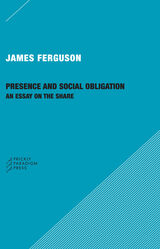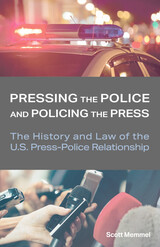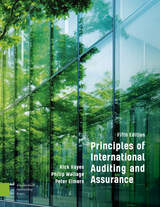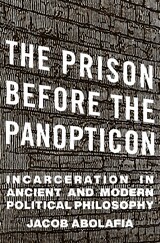16 start with M start with M
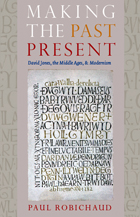


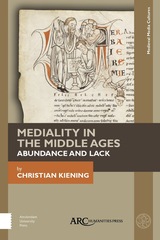
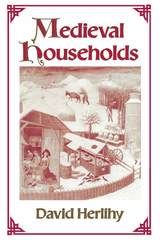
How should the medieval family be characterized? Who formed the household and what were the ties of kinship, law, and affection that bound the members together? David Herlihy explores these questions from ancient Greece to the households of fifteenth-century Tuscany, to provide a broad new interpretation of family life. In a series of bold hypotheses, he presents his ideas about the emergence of a distinctive medieval household and its transformation over a thousand years.
Ancient societies lacked the concept of the family as a moral unit and displayed an extraordinary variety of living arrangements, from the huge palaces of the rich to the hovels of the slaves. Not until the seventh and eighth centuries did families take on a more standard form as a result of the congruence of material circumstances, ideological pressures, and the force of cultural norms. By the eleventh century, families had acquired a characteristic kinship organization first visible among elites and then spreading to other classes. From an indifferent network of descent through either male or female lines evolved the new concept of patrilineage, or descent and inheritance through the male line. For the first time a clear set of emotional ties linked family members.
It is the author’s singular contribution to show how, as they evolved from their heritages of either barbarian society or classical antiquity, medieval households developed commensurable forms, distinctive ties of kindred, and a tighter moral and emotional unity to produce the family as we know it. Herlihy’s range of sources is prodigious: ancient Roman and Greek authors, Aquinas, Augustine, archives of monasteries, sermons of saints, civil and canon law, inquisitorial records, civil registers, charters, censuses and surveys, wills, marriage certificates, birth records, and more. This well-written book will be the starting point for all future studies of medieval domestic life.

A provocative new approach to medieval culture
In Medieval Identity Machines, Jeffrey J. Cohen examines the messiness, permeability, and perversity of medieval bodies, arguing that human identity always exceeds the limits of the flesh. Combining critical theory with a rigorous reading of medieval texts, Cohen asks if the category “human” isn’t too small to contain the multiplicity of identities. As such, this book is the first to argue for a “posthuman” Middle Ages and to make extensive use of the philosophical writings of Gilles Deleuze to rethink the medieval.
Among the topics that Cohen covers are the passionate bond between men and horses in chivalric training; the interrelation of demons, celibacy, and colonialism in an Anglo-Saxon saint’s life; Lancelot’s masochism as envisioned by Chrétien de Troyes; the voice of thunder echoing from Margery Kempe; and the fantasies that sustained some dominant conceptions of race. This tour of identity—in all its fragility and diffusion—illustrates the centrality of the Middle Ages to theory as it enhances our understanding of self, embodiment, and temporality in the medieval world.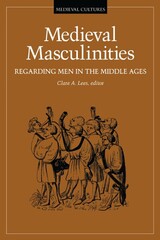
"Ranging from questions of epic violence and heroic embodiments of manhood to constructions of bachelorhood, husbandry, and sainthood, Medieval Masculinities is the first synthesis of medieval and gender studies to focus on masculinities."
Harry Brod, editor of The Making of Masculinities"We should not be working [exclusively] on the subjected sex any more than a historian of class can focus exclusively on peasants."-Natalie Zemon Davis, 1975 In the years since Natalie Davis made this remark, men's studies, and gender studies along with it, has earned its place in scholarship. What is often missing from such studies, however, is the insight that the concept of gender in general, and that of masculinity in particular, can be understood only in relation to individual societies, examined at specific historical and cultural moments. A brilliant application of this insight, Medieval Masculinities is the first full-length collection to explore the issues of men's studies and contemporary theories of gender within the context of the Middle Ages. Interdisciplinary and multicultural, the essays range from matrimony in medieval Italy to bachelorhood in Renaissance Venice, from friars and saints to the male animal in the fables of Marie de France, from manhood in Sir Gawain and the Green Knight, Beowulf, and the Roman d'Eneas to men as "other," whether Muslim or Jew, in medieval Castilian epic and ballad. The authors are especially concerned with cultural manifestations of masculinity that transcend this particular historical period-idealized gender roles, political and economic factors in structuring social institutions, and the impact of masculinist ideology in fostering and maintaining power. Together, their essays constitute an important reassessment of traditional assumptions within medieval studies as well as a major contribution to the evolving study of gender.ContributorsChristopher Baswell, Barnard CollegeVern L. Bullough, SUNY, BuffaloStanley Chojnacki, Michigan State UniversityJohn Coakley, New Brunswick Theological SeminaryThelma Fenster, Fordham UniversityClare Kinney, University of VirginiaClare A. Lees, University of PennsylvaniaJo Ann McNamara, Hunter CollegeLouise Mirrer, Fordham UniversityHarriet Spiegel, California State University, ChicoSusan Mosher Stuard, Haverford College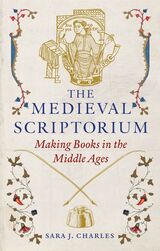
This book takes the reader on an immersive journey through medieval manuscript production in the Latin Christian world. Each chapter opens with a lively vignette by a medieval narrator—including a parchment maker, scribe, and illuminator—introducing various aspects of manuscript production. Sara J. Charles poses the question “What actually is a scriptorium?” and explores the development of the medieval scriptorium from its early Christian beginnings through to its eventual decline and the growth of the printing press.
With the written word at the very heart of the Christian monastic movement, we see the immense amount of labor, planning, and networks needed to produce each manuscript. By tapping into these processes and procedures, The Medieval Scriptorium helps us to experience medieval life through the lens of a manuscript maker.
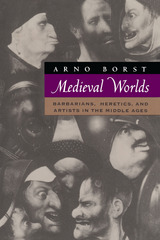
Clearly interested in the forms of medieval behavior which gave rise to the seeds of modern society, Borst focuses on three in particular that gave momentum to medieval religious, social, and intellectual movements: the barbaric, heretical, and artistic. Borst concludes by reflecting on his own life as a scholar and draws out lessons for us from the turbulence of the Middle Ages.
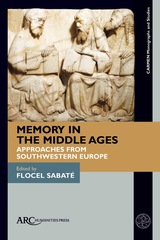
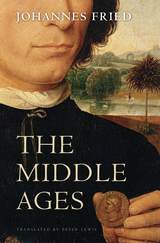
Since the fifteenth century, when humanist writers began to speak of a “middle” period in history linking their time to the ancient world, the nature of the Middle Ages has been widely debated. Across the millennium from 500 to 1500, distinguished historian Johannes Fried describes a dynamic confluence of political, social, religious, economic, and scientific developments that draws a guiding thread through the era: the growth of a culture of reason.
“Fried’s breadth of knowledge is formidable and his passion for the period admirable…Those with a true passion for the Middle Ages will be thrilled by this ambitious defensio.”
—Dan Jones, Sunday Times
“Reads like a counterblast to the hot air of the liberal-humanist interpreters of European history…[Fried] does justice both to the centrifugal fragmentation of the European region into monarchies, cities, republics, heresies, trade and craft associations, vernacular literatures, and to the persistence of unifying and homogenizing forces: the papacy, the Western Empire, the schools, the friars, the civil lawyers, the bankers, the Crusades…Comprehensive coverage of the whole medieval continent in flux.”
—Eric Christiansen, New York Review of Books
“[An] absorbing book…Fried covers much in the realm of ideas on monarchy, jurisprudence, arts, chivalry and courtly love, millenarianism and papal power, all of it a rewarding read.”
—Sean McGlynn, The Spectator
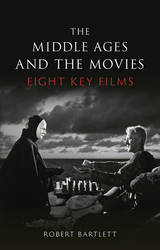
In The Middle Ages and the Movies, eminent historian Robert Bartlett takes a fresh, cogent look at how our view of medieval history has been shaped by eight significant films of the twentieth century. The book ranges from the concoction of sex and nationalism in Mel Gibson’s Braveheart, to Fritz Lang’s silent epic Siegfried, the art-house classic The Seventh Seal, and the epic historical drama El Cid. Bartlett examines the historical accuracy of these films, as well as other salient aspects—how was Umberto Eco’s Name of the Rose translated from page to screen? Why is Monty Python and the Holy Grail funny? And how was Eisenstein’s Alexander Nevsky shaped by the Stalinist tyranny under which it was filmed?
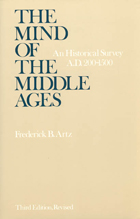
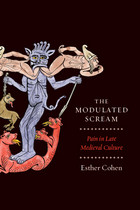
In the late medieval era, pain could be a symbol of holiness, disease, sin, or truth. It could be encouragement to lead a moral life, a punishment for wrong doing, or a method of healing. Exploring the varied depictions and descriptions of pain—from martyrdom narratives to practices of torture and surgery—The Modulated Scream attempts to decode this culture of suffering in the Middle Ages.
Esther Cohen brings to life the cacophony of howls emerging from the written record of physicians, torturers, theologians, and mystics. In considering how people understood suffering, explained it, and meted it out, Cohen discovers that pain was imbued with multiple meanings. While interpreting pain was the province only of the rarified elite, harnessing pain for religious, moral, legal, and social purposes was a practice that pervaded all classes of Medieval life. In the overlap of these contradicting attitudes about what pain was for—how it was to be understood and who should use it—Cohen reveals the distinct and often conflicting cultural traditions and practices of late medieval Europeans. Ambitious and wide-ranging, The Modulated Scream is intellectual history at its most acute.

The monastery of Monte Cassino, founded by St. Benedict in the sixth century, was the cradle of Western monasticism. It became one of the vital centers of culture and learning in Europe. At the height of its influence, in the eleventh and early twelfth centuries, two of its abbots (including Desiderius) and one of its monks became popes, and it controlled a vast network of dependencies—churches, monasteries, villages, and farms—especially in central and southern Italy.
Herbert Bloch's study, the product of forty years of research, takes as its starting point the twelfth-century bronze doors of the basilica of the abbey, the most significant relic of the medieval structure. The panels of these doors are inscribed with a list of more than 180 of the abbey's possessions. Mr. Bloch has supplemented this roster with lists found in papal and imperial privileges and other documents. The heart of the book is a detailed investigation of the nearly 700 dependencies of Monte Cassino from the sixth to the twelfth century and beyond. No comparable study of this or any other great medieval institution has ever before been undertaken.
Ironically, it was the bombing of 1944, which destroyed the monastery, that led to an unexpected revelation: the discovery, on the reverse side of some panels of the doors, of magnificent engraved figures of patriarchs and apostles. These proved to be remnants of the church portal ordered from Constantinople by Desiderius in the eleventh century, which marked the beginning of the grandiose reconstruction of the abbey and its church, the latter to become a model for many other churches. In order to solve the riddle of the doors of Monte Cassino, Bloch has investigated other bronze doors of Byzantine origin in Italy and the doors of the great Italian master Oderisius of Benevento, as well as those of S. Clemente a Casauria and of the cathedral of Benevento. Also included is a study of the political and cultural impact of Byzantium on Monte Cassino and a chapter on Constantinus Africanus, Saracen turned monk, one of the most interesting figures in the history of medieval medicine.
The text is sumptuously illustrated with 193 plates; most of the more than 300 illustrations have never before been published. This three-volume work, with its nine detailed indexes, offers a wealth of information for scholars in many different fields.

READERS
Browse our collection.
PUBLISHERS
See BiblioVault's publisher services.
STUDENT SERVICES
Files for college accessibility offices.
UChicago Accessibility Resources
home | accessibility | search | about | contact us
BiblioVault ® 2001 - 2024
The University of Chicago Press


